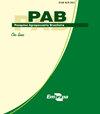不同生产系统饲养的杜珀×圣诞老人Inês羔羊的动物技术性能
IF 0.7
4区 农林科学
Q3 AGRICULTURE, MULTIDISCIPLINARY
引用次数: 0
摘要
摘要本研究的目的是比较杜珀与桑塔Inês杂交羔羊在有遮阳、无遮阳和饲养场放牧系统下的动物技术性能。选用24只未阉割羔羊,采用完全随机试验设计,分为3个处理,每个处理8个重复:‘Aruana’牧场无遮阳+补料;“Aruana”牧场带遮阳+补充;饲喂黑麦草干草和精料,比例为20:80。除胸尖+侧翼在遮荫牧场较低外,各处理对羔羊的屠宰年龄、初生重、腿紧度、真产量和主切产量均无显著影响。但平均日增重、体况评分、屠宰活重、胴体致密度指数、冷胴体和空胴体重、冷胴体产量在不同处理间存在差异,在饲养场表现较高。在饲养场终止饲养可以提高杜珀x圣诞老人Inês羊的动物技术性能,有利于降低屠宰年龄,增加主要商业切肉的重量,但不会提高产量。本文章由计算机程序翻译,如有差异,请以英文原文为准。
Zootechnical performance of Dorper x Santa Inês lambs raised in different production systems
Abstract The objective of this work was to compare the zootechnical performance of Dorper x Santa Inês crossbred lambs finished in grazing systems on Megathyrsus maximus Aruana cultivar pasture, with and without shading, and in a feedlot. Twenty-four non-castrated lambs were used in a completely randomized experimental design, with the three following treatments with eight replicates each: 'Aruana' pasture without shading + supplement; 'Aruana' pasture with shading + supplement; and feedlot, with diet containing ryegrass hay and concentrate at a 20:80 ratio. The treatments did not influence lamb age at slaughter, birth weight, leg compactness, true yield, and main cut yield, except that of breast tip + flank that was lower for the pasture with shading. However, average daily gain, body condition score, live weight at slaughter, carcass compactness index, cold carcass and empty body weights, and cold carcass yield differed between treatments, showing higher values in the feedlot. Termination in the feedlot increases the zootechnical performance of Dorper x Santa Inês sheep and favors a lower age at slaughter, as well as a greater weight of the main commercial cuts, but not their yield.
求助全文
通过发布文献求助,成功后即可免费获取论文全文。
去求助
来源期刊

Pesquisa Agropecuaria Brasileira
农林科学-农业综合
CiteScore
1.20
自引率
0.00%
发文量
45
审稿时长
9-18 weeks
期刊介绍:
Pesquisa Agropecuária Brasileira – PAB – is issued monthly by Empresa Brasileira de Pesquisa Agropecuária – EMBRAPA, affiliated to Ministry of Agriculture, Livestock and Food Supply. PAB publishes original scientific-technological articles on Plant Physiology, Plant Pathology, Crop Science, Genetics, Soil Science, Food Technology and Animal Science.
Its abbreviated title is Pesq. agropec. bras., and it should be used in bibliographies, footnotes, references and bibliographic strips.
 求助内容:
求助内容: 应助结果提醒方式:
应助结果提醒方式:


